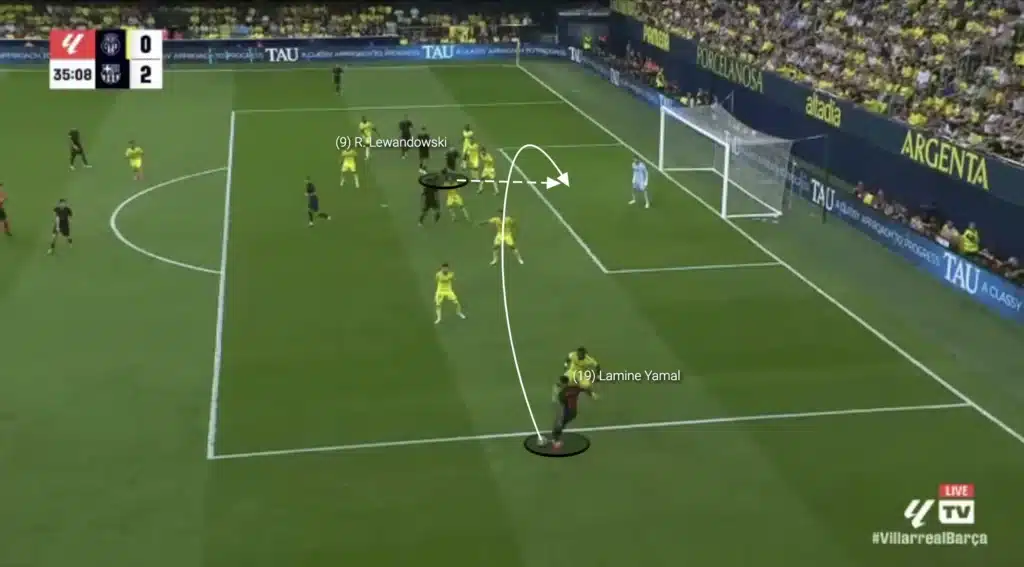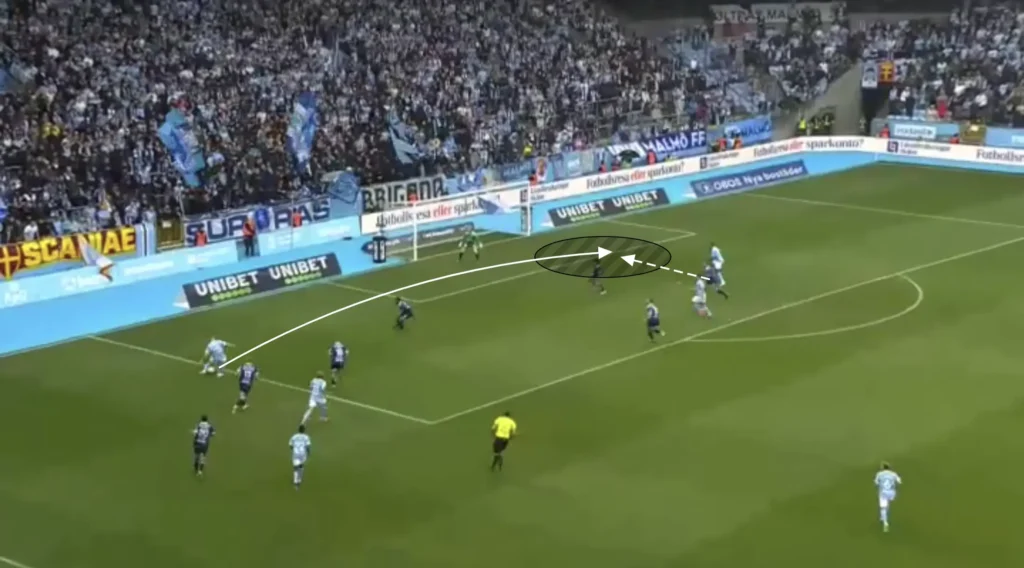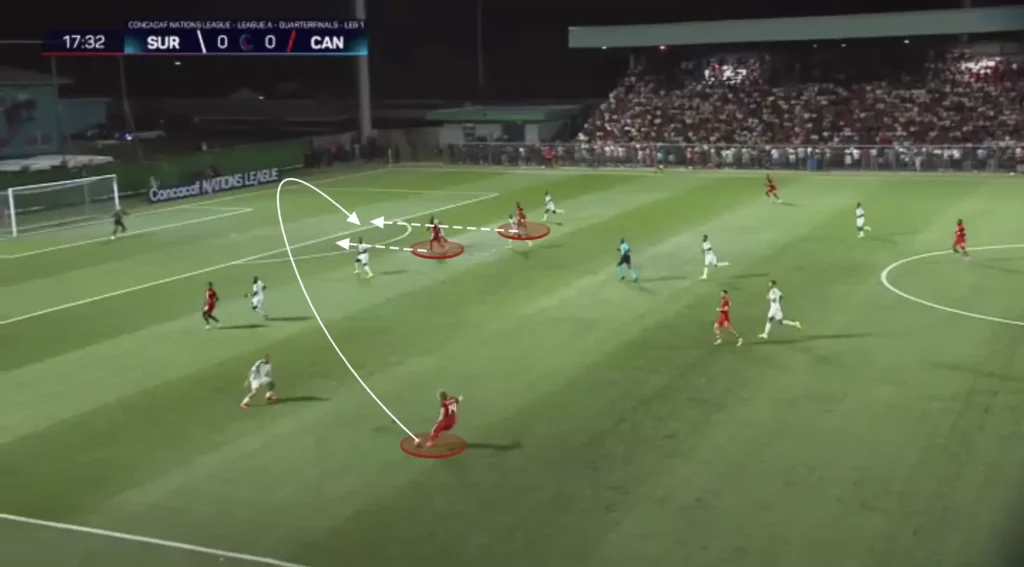Crossing is one of the most effective methods for creating goal-scoring opportunities in football. A well-delivered cross can bypass defensive lines, stretch opposition structures, and provide attackers with high-quality chances to score. In modern football, crossing remains a vital offensive tool, particularly for teams that rely on width to break down compact defenses.
In this article, we will explore the different types of crosses, key tactical principles, factors affecting the effectiveness of crossing, variations in crossing strategies based on formations, and case studies of top teams that use crossing as a primary offensive mechanism.
Types of Crosses
Crossing varies based on the delivery method, positioning, and target areas. A well-executed cross is dependent on the crosser’s ability to recognize the movement of teammates, defensive structure, and goalkeeper positioning. Here are the main types:
1. Inswinging Cross
An inswinging cross is delivered with a curl toward the goal. This type of cross is difficult for defenders and goalkeepers to judge as it bends inward, increasing the chances of confusion or defensive errors. Inswingers are commonly used from wide areas when a player cuts inside onto their stronger foot.
- Best used when: Targeting aggressive near-post runs, exploiting gaps in the defensive line, or capitalizing on a goalkeeper’s hesitation.

2. Outswinging Cross
An outswinging cross bends away from the goal and allows attackers to generate power when attacking the ball. It forces defenders to step forward, which can create space behind them for late runners. Outswingers are particularly effective in set-piece situations, as they create opportunities for headers and volleys.
- Best used when: Delivering into an attacking line with multiple runners, targeting tall strikers, or creating secondary chances.

3. Driven Cross
A driven cross is delivered at a high speed with a low trajectory. These crosses are often played across the six-yard box, making them difficult for goalkeepers and defenders to react to quickly. Driven deliveries require excellent technique and are typically played by fullbacks or wingers from the flanks.
- Best used when: Trying to catch defenders off guard, exploiting fast-paced counterattacks, or playing into the feet of attackers inside the penalty box.

4. Lofted Cross
A lofted cross is delivered high into the air, typically aimed at an aerially dominant striker. It allows tall forwards to challenge defenders in aerial duels and generate power on headers. However, lofted crosses take more time to reach their target, giving defenders and goalkeepers a chance to react.
- Best used when: The team has a strong aerial presence, late runners are attacking the back post, or against low-block defenses.

5. Cut-back Cross
A cut-back is a ground pass played from the byline back into the penalty area to find an attacker in a better shooting position. This type of delivery is highly effective against compact defensive setups, as it eliminates defensive height advantage and prioritizes precision over power.
- Best used when: Breaking down low-blocks, creating high-quality shooting chances, or targeting the edge of the penalty box.

6. Early Cross
An early cross is delivered from a deeper position before the defense has time to set. These crosses can catch defensive lines off guard and create direct scoring opportunities for strikers making well-timed runs.
- Best used when: The opposing defense is slow to retreat, the striker has pace to attack the space, or exploiting gaps in the defensive line.

Key Tactical Principles of Crossing
A successful crossing approach relies on fundamental tactical principles that optimize delivery, movement, and decision-making.
1. Timing of Delivery
- The crosser must recognize the movement of teammates before delivering the ball. Premature or delayed crosses can reduce effectiveness.
- Timing also applies to attackers making their runs—poor synchronization leads to wasted opportunities.
2. Movement in the Box
- Attackers must vary their runs, including near-post, far-post, and late arrivals to disorganize defenders.
- Decoy runs can create space for a primary target.
3. Numerical Presence
- A strong crossing game depends on multiple players attacking different zones.
- If only one forward is inside the box, the chances of converting a cross decrease significantly.
4. Targeted Areas
- The Golden Zone (around the six-yard box and penalty spot) is a prime location for crosses due to its high goal probability.
- Near-post and far-post variations ensure unpredictability.
5. Fullback and Winger Combinations
- Overlapping or underlapping movements help create crossing opportunities by pulling defenders out of position.
6. Variability in Delivery
- Predictability makes it easier for defenders to intercept crosses, so mixing up delivery types is crucial.
Conclusion
Crossing remains a key attacking strategy in football, but its effectiveness depends on precise execution, movement, and tactical structure. Understanding different cross types, movement patterns, and variations in approach helps teams maximize goal-scoring opportunities. Whether through traditional wingers or attacking fullbacks, crossing is a fundamental aspect of breaking down defensive lines and providing consistent attacking threats. Teams that integrate crossing efficiently into their tactical approach often find themselves creating more high-quality chances and increasing their attacking output.
